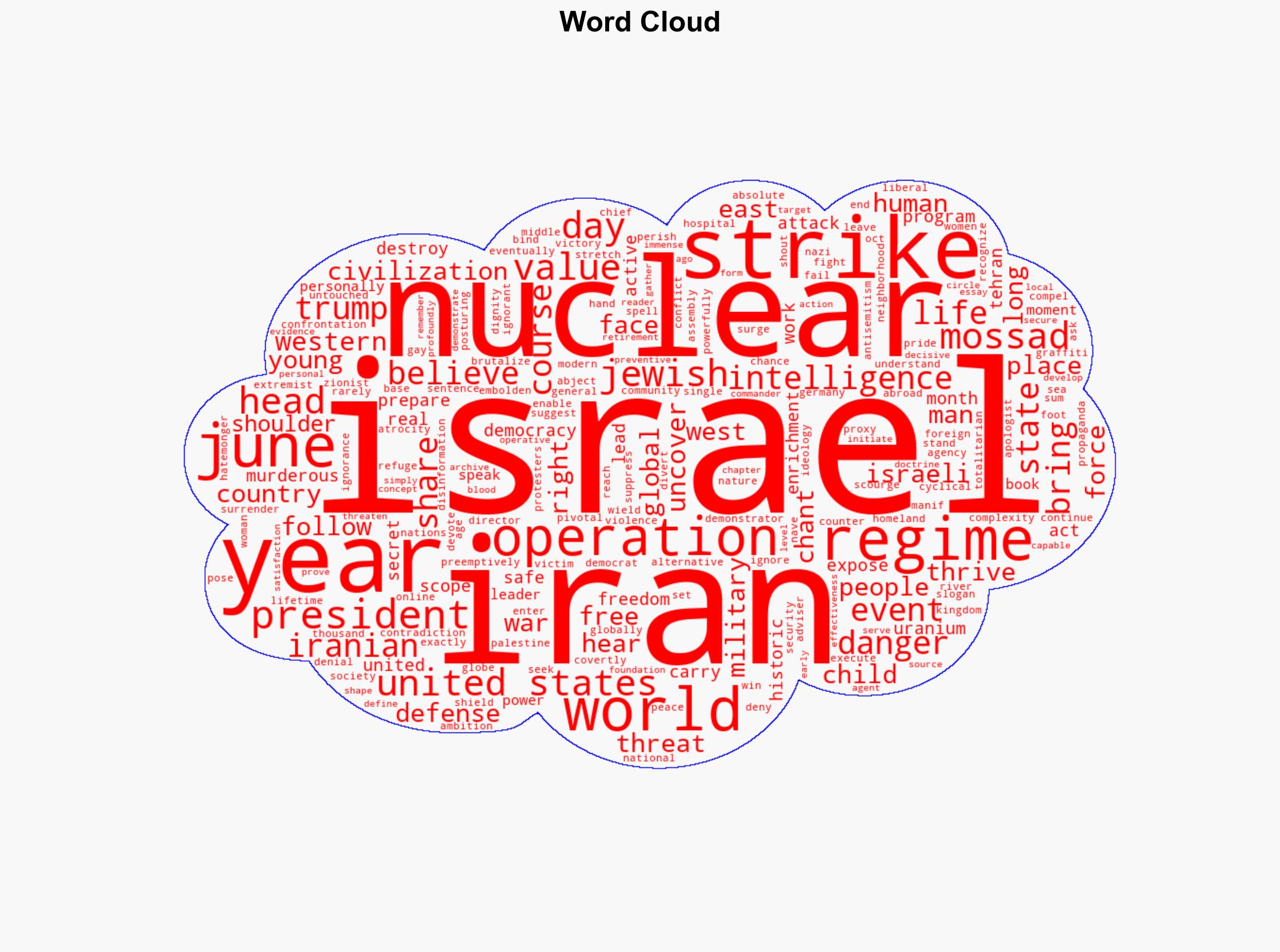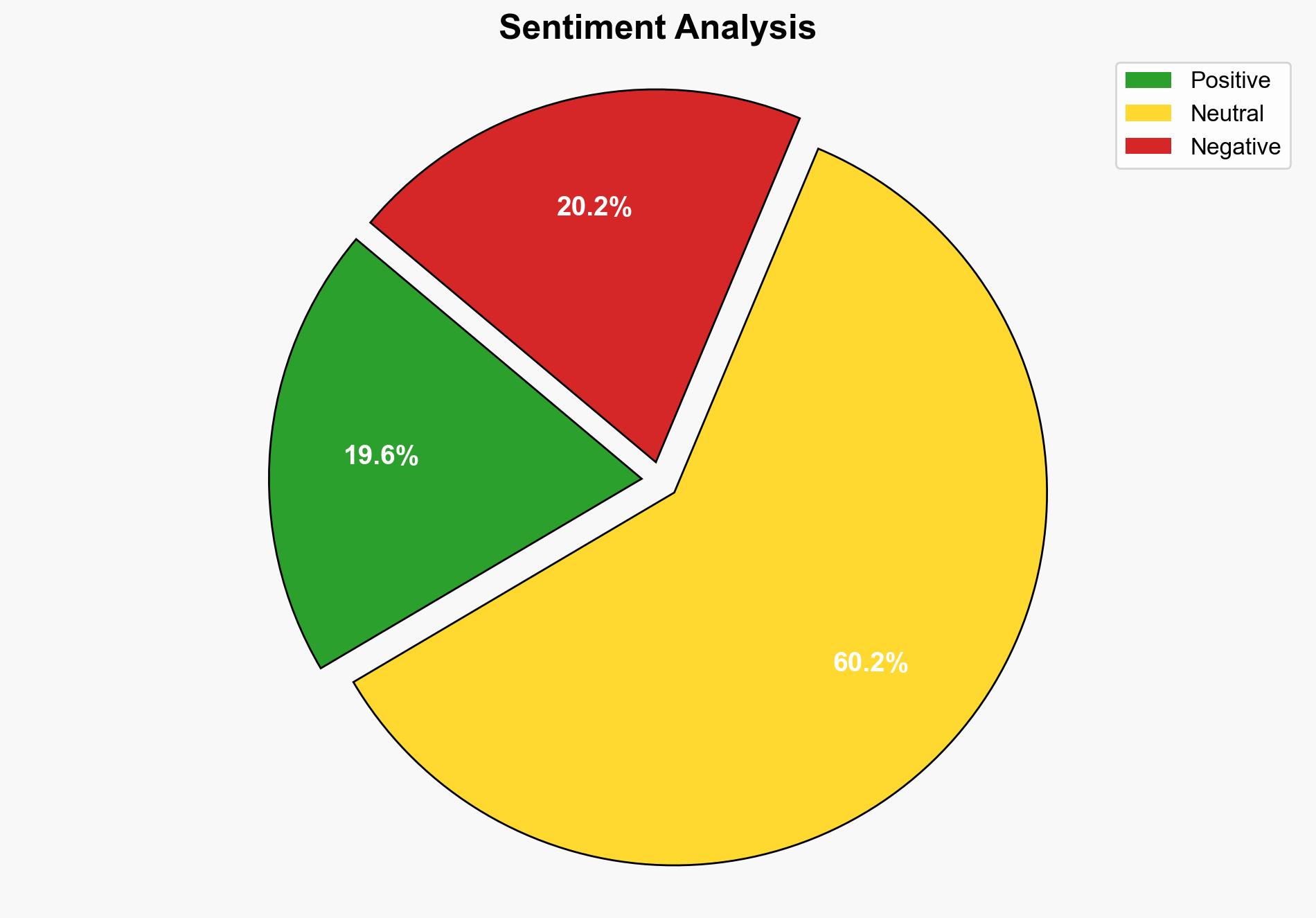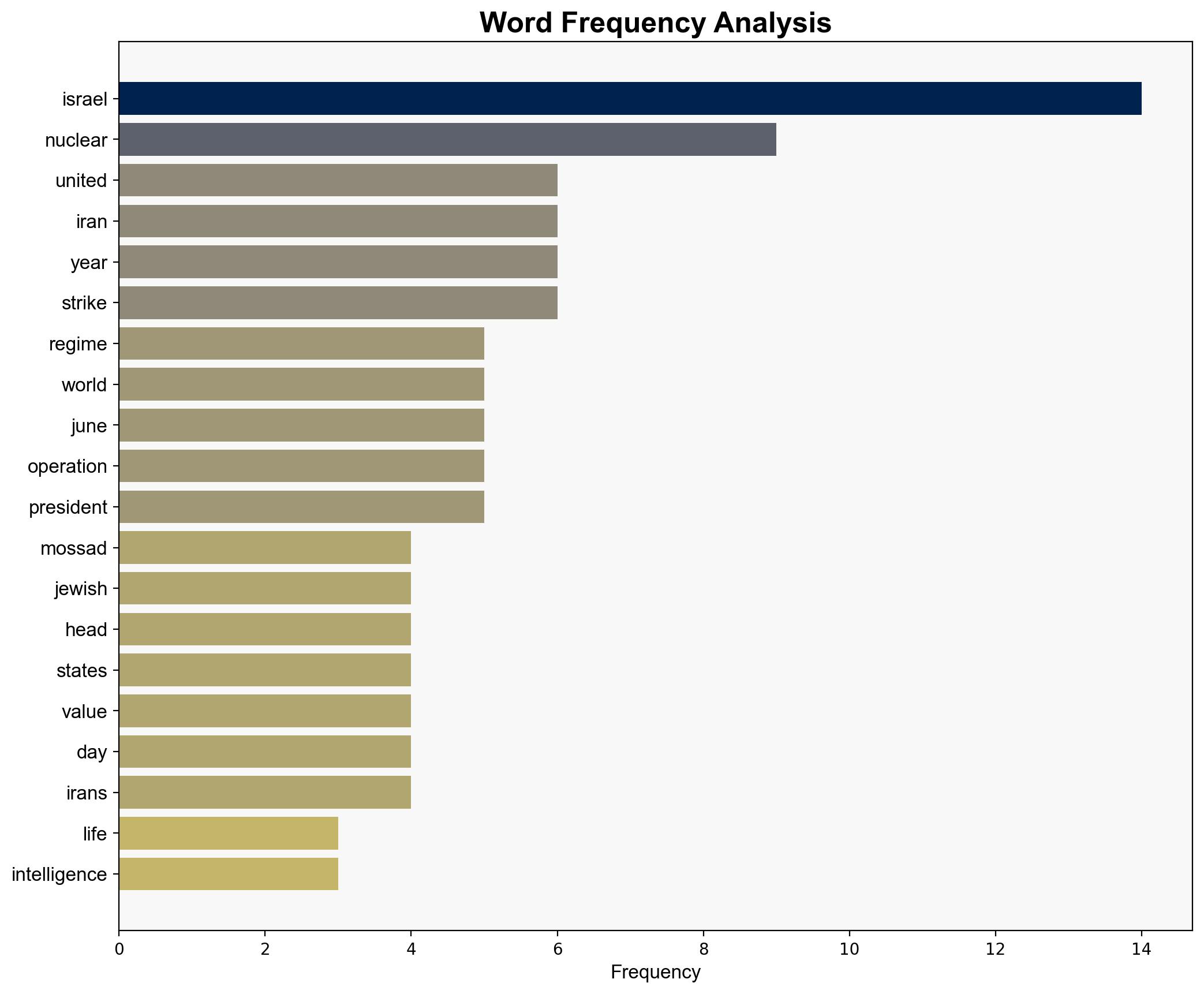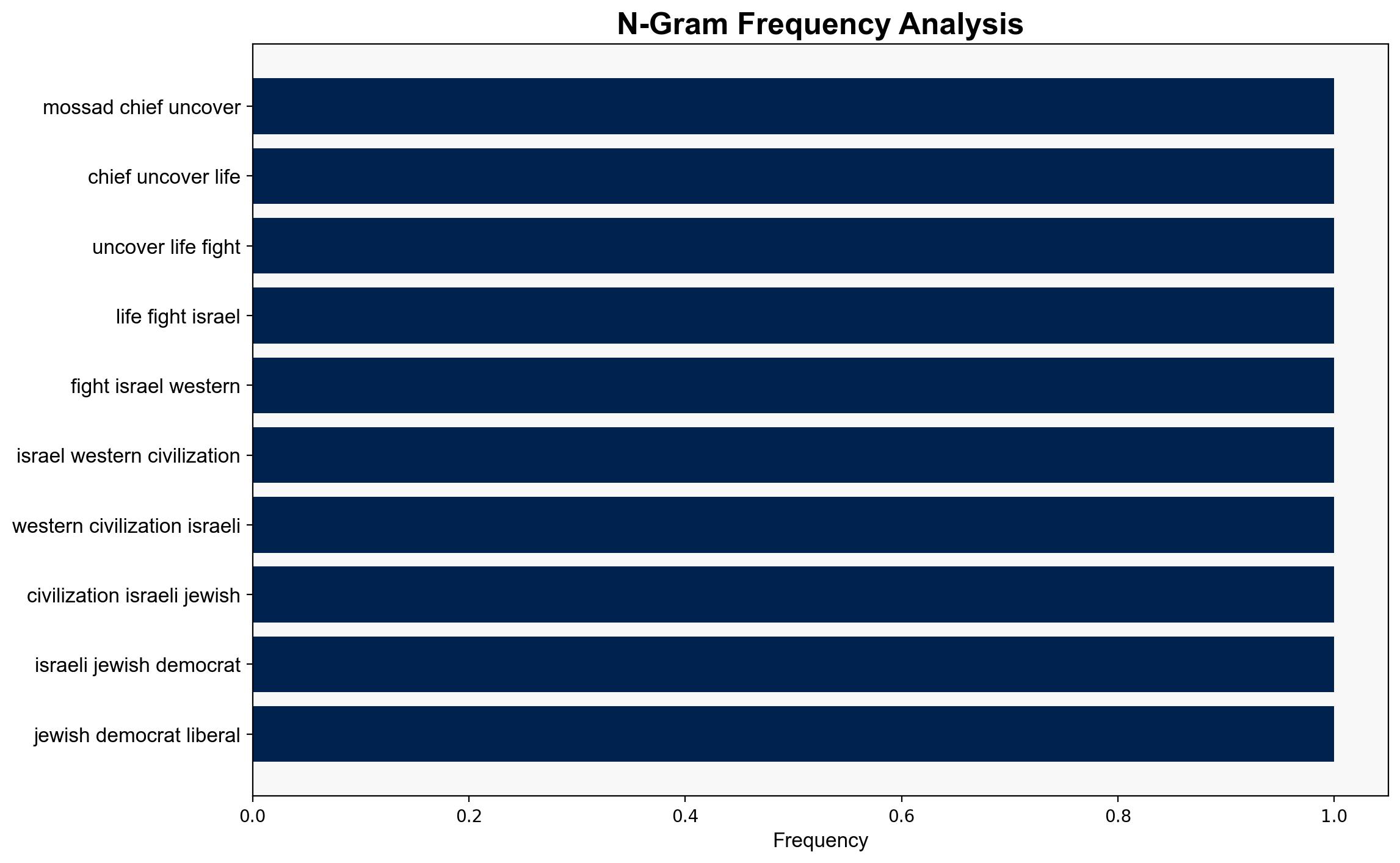A former Mossad chief uncovers his life fighting for Israel and Western civilization – New York Post
Published on: 2025-09-15
Intelligence Report: A former Mossad chief uncovers his life fighting for Israel and Western civilization – New York Post
1. BLUF (Bottom Line Up Front)
The intelligence suggests two primary hypotheses regarding the former Mossad chief’s narrative: (1) The narrative is a strategic communication to reinforce Israel’s defense posture and justify preemptive actions against perceived threats, particularly Iran. (2) The narrative is a personal reflection intended to influence public opinion and policy in favor of Israel’s security needs. The first hypothesis is better supported due to the emphasis on strategic operations and historical context. Confidence level: Moderate. Recommended action: Monitor for shifts in regional alliances and rhetoric that may indicate changes in threat perception or policy direction.
2. Competing Hypotheses
1. **Strategic Communication Hypothesis**: The narrative serves as a strategic communication tool to reinforce Israel’s defense posture and justify preemptive actions against threats, particularly Iran. This is supported by detailed accounts of operations and the emphasis on global security implications.
2. **Personal Reflection Hypothesis**: The narrative is a personal reflection aimed at influencing public opinion and policy in favor of Israel’s security needs. This is suggested by the personal tone and focus on individual experiences and values.
Using ACH 2.0, the Strategic Communication Hypothesis is more consistent with the source’s emphasis on operational details and strategic outcomes.
3. Key Assumptions and Red Flags
– **Assumptions**: The narrative assumes a shared understanding of threats and the legitimacy of preemptive defense measures. It presumes alignment between Israeli and Western security interests.
– **Red Flags**: Potential bias in portraying Iran as the sole aggressor without acknowledging broader regional dynamics. Lack of counter-narratives or alternative perspectives on the operations described.
– **Blind Spots**: The narrative may overlook the complexity of Middle Eastern geopolitics and the potential for unintended consequences of military actions.
4. Implications and Strategic Risks
– **Patterns**: The narrative aligns with historical patterns of Israeli preemptive defense strategies and the framing of Iran as a primary threat.
– **Cascading Threats**: Escalation of tensions with Iran could lead to broader regional instability, impacting global energy markets and security alliances.
– **Potential Escalation**: Increased rhetoric and military posturing may provoke retaliatory actions from Iran or its proxies, heightening regional conflict risks.
5. Recommendations and Outlook
- Enhance diplomatic efforts to de-escalate tensions with Iran while maintaining robust defense capabilities.
- Monitor regional alliances for shifts that could impact Israel’s security posture.
- Scenario Projections:
- Best: Diplomatic resolution reduces regional tensions.
- Worst: Military conflict escalates, involving multiple state and non-state actors.
- Most Likely: Continued low-intensity conflict with periodic escalations.
6. Key Individuals and Entities
– Benjamin Netanyahu
– Donald Trump
– Iranian leadership
7. Thematic Tags
national security threats, cybersecurity, counter-terrorism, regional focus




